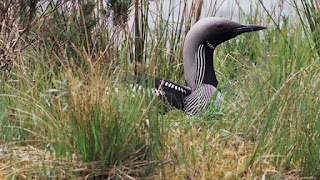S P E A K E R 1
Quantification of movement and behaviour of African wild dogs (Lycaon pictus) and domestic dogs (Canis familiaris) using Daily Diary biologgers
Holly English
Biologgers incorporating accelerometers and magnetometers can facilitate quantification of animal behaviour and fine-scale movement patterns. Swansea University’s Daily Diary features a tri-axial accelerometer and magnetometer, as well as temperature, pressure and light sensors. Preliminary analyses of movement patterns related to locomotion type in domestic dogs (Canis familiaris) and captive African wild dogs (Lycaon pictus) are being used to develop a biologger ethogram verified by behavioural observations. This work on captive and domesticated animals provides a basis for future studies on wild canids, allowing fine-scale movement and behaviour to be determined from field data, where direct observation is often impossible.
S P E A K E R 2
The Application of Artificial Floating Islands in Saline Environments
Jessica Ware
Approximately 30% of UK electricity generation must be produced via renewable energy, in order to meet ambitious 2020 carbon emissions targets. Due to such pressures for decarbonisation, the marine energy sector is gaining momentum, as they seek to develop, construct and operate tidal and wave energy projects across the UK. Such hardening of the coastal landscape is anticipated to cause considerable changes in coastal ecosystem structure and community assemblages. However, the scale of the impact is still unknown and further research is required on ecosystem scale enhancement measures such as Artificial Floating Islands (AFIs).
AFIs have primarily been used in freshwater habitats such as reservoirs, ponds and river systems for water quality improvement and habitat creation for breeding birds. In order to address the potential application of AFIs in marine environments, this comparative study focuses on both the floral species suitable for island installation and the fauna associated with the islands including birds, fish and macroinvertebrate populations. By addressing gaps in current research this study aims to support future ecosystem enhancement programs that seek to mitigate the loss of coastal habitats.
S P E A K E R 3
Can insect larvae be used to study gut-related pathobiology?
Helena Emery
Larvae of the greater waxmoth, Galleria mellonella, are an established model for studying novel drug toxicity and microbial pathogenicity. Despite its frequent use, little is understood about the insect gut and its relatedness to the vertebrate gastro-intestinal tract. Overall, this project aims to evaluate the suitability of G. mellonella as a novel platform for gut-related damage and repair. To this end, a combined molecular, cellular and whole organism approach will be employed – in addition to interrogating the immune-modulating properties of the entomopathogenic fungus, Cordyceps sinensis, as an emerging nutraceutical.



No comments:
Post a Comment